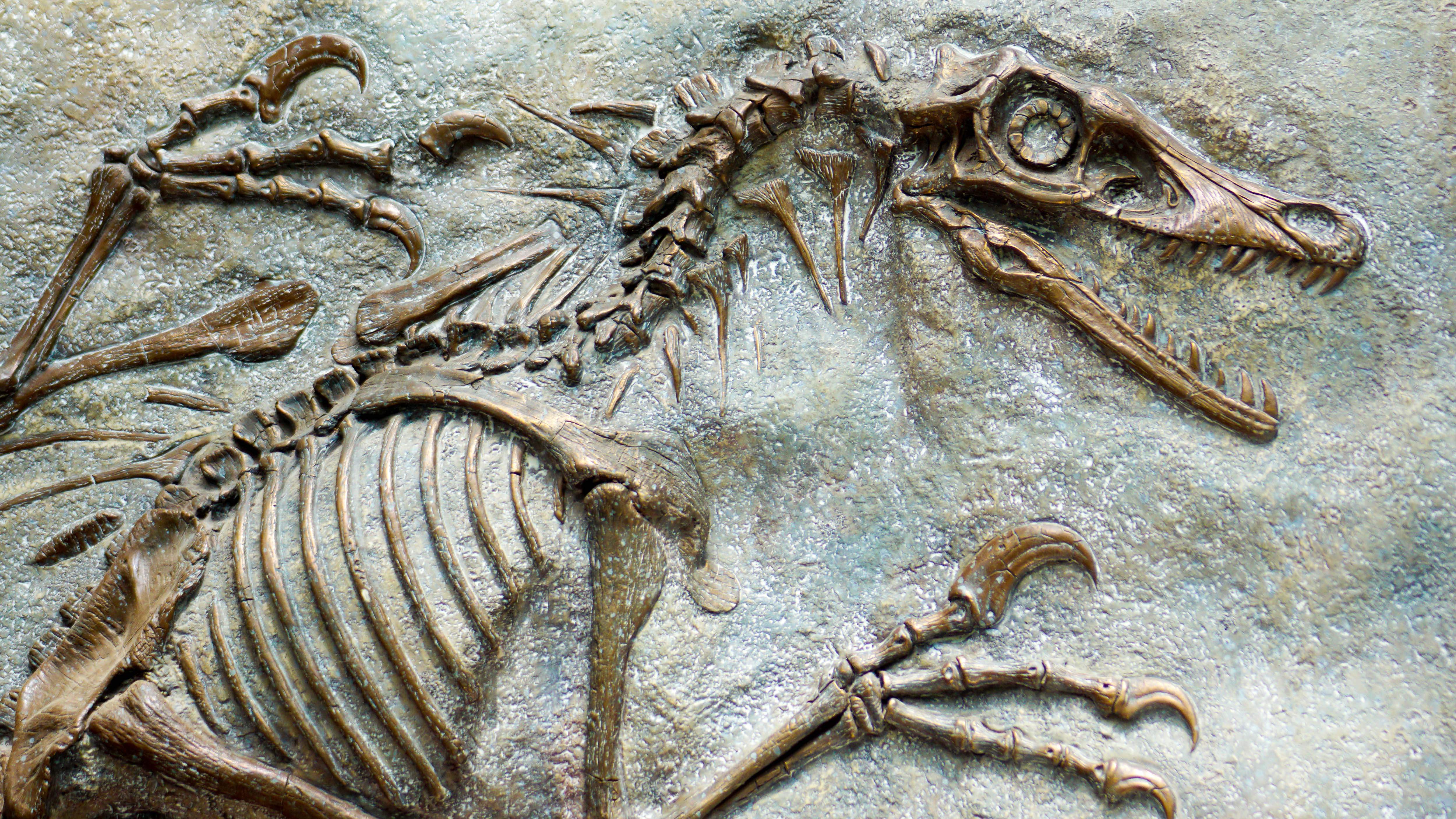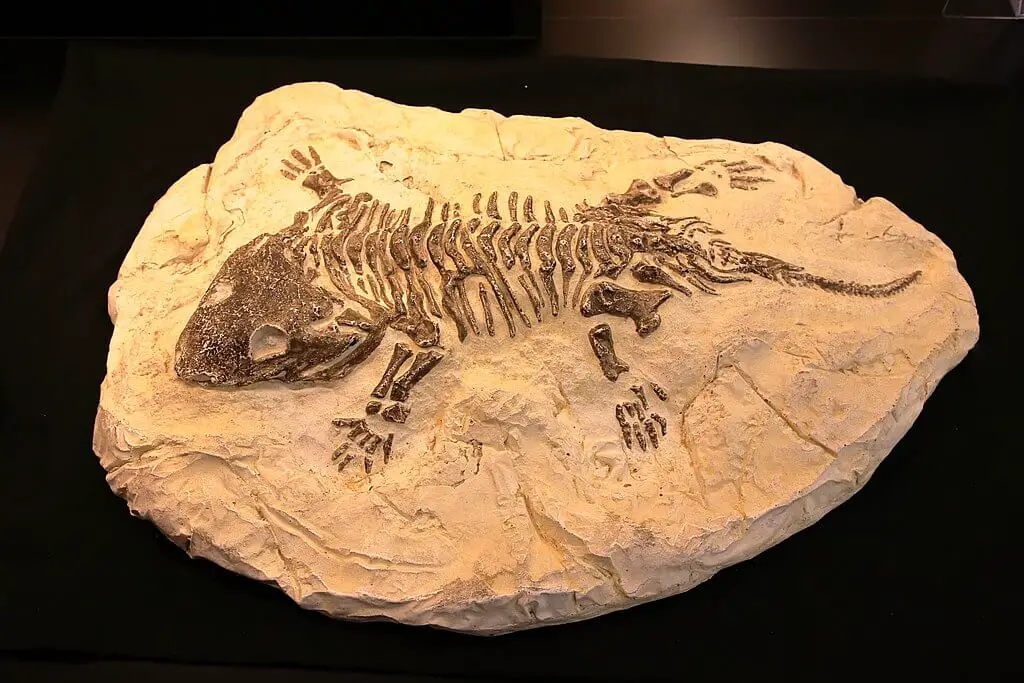Dinosaur Fossils Examples Dinosaur the common name given to a group of reptiles often very large that first appeared roughly 245 million years ago and thrived worldwide for nearly 180 million years Most died out by the end of the Cretaceous Period Many lines of evidence show that one lineage evolved into birds about 155 million years ago
The earliest true dinosaur fossils date to the early part of the Late Triassic but it is very unlikely that we have found the actual very first dinosaurs and the group probably originated in the Middle Triassic or Early Triassic The well known Plateosaurus for example could reach more than 30 feet long and four tons well before the For example they serve to indicate the stratigraphic position of coal seams a 195 million year old dinosaur fossil from the Early Jurassic Period more Fossil collection as performed by paleontologists geologists and other scientists typically involves a rigorous excavation and documentation process Unearthing the specimen from the
Dinosaur Fossils Examples
 Dinosaur Fossils Examples
Dinosaur Fossils Examples
https://www.generationgenius.com/wp-content/uploads/2020/07/338-still-1-scaled.jpg
Transcript To find fossils paleontologists first carry out an operation called prospecting which involves hiking while keeping one s eyes focused on the ground in hopes of finding fragments of fossils on the surface Once a fossil fragment is found the collector brushes away the loose dirt on the surface to see if more of the specimen is
Templates are pre-designed documents or files that can be used for numerous purposes. They can conserve time and effort by providing a ready-made format and layout for creating different kinds of material. Templates can be utilized for personal or professional jobs, such as resumes, invites, leaflets, newsletters, reports, presentations, and more.
Dinosaur Fossils Examples

Fossils Interesting Facts For Kids Young Students

Our Evolving Selves Dinosaur Fossils Fossil Bones Ancient Animals

9 Different Types Of Fossils

Fossils Kinds Of Fossils

9 Different Types Of Fossils

Explaining Fossils For Kids LoveToKnow

https://www.nationalgeographic.com/science/article/photos-dinosaurs-fossils-t-rex-triceratops-velociraptor-paleontology
3 32 Dinosaurs 101 Over a thousand dinosaur species once roamed the Earth Learn which ones were the largest and the smallest what dinosaurs ate and how they behaved as well as surprising

https://www.nationalgeographic.org/encyclopedia/fossil/
Fossil Fossils are the preserved remains or traces of remains of ancient animals and plants Grades 5 8 Subjects Geology Earth Science Biology Geography Photograph Pterodactyl Fossil This fossil of the pterosaur Pterodactylus kochi is preserved in limestone

https://www.nps.gov/subjects/fossils/dinosaurs-in-the-fossil-record.htm
Dinosaur fossils come in two forms body fossils and trace fossils Body fossils are what we usually think of when we think of dinosaurs bones teeth bony armor rare soft tissue impressions and so on

https://www.nps.gov/subjects/fossils/dinosaurs.htm
Introduction Dinosaurs are among the most popular and iconic fossil organisms and dinosaur bones and tracks are favorite attractions at several National Park Service units Body and trace fossils of non avian dinosaurs have been documented from at least 21 NPS areas

https://www.nhm.ac.uk/discover/how-are-fossils-formed.html
Fossilised shells are also body fossils Fossilised claw of Baryonyx another British dinosaur Claws like fossil skulls and skeletons are body fossils Other fossilised signs of a plant or animal are called trace fossils Dinosaur trace fossils include footprints imprints of their skin or feathers and poo called coprolites
Most finds can be put into one of two categories tracks from rocks of Early 201 to 174 Ma or Middle Jurassic age 174 to 163 Ma or body fossils from the Morrison Formation of Late Jurassic age 163 to 145 Ma For example in the Triassic there were non dinosaurian groups that looked like ostrich mimics or bigger theropods or had teeth very much like simple herbivorous dinosaur teeth so that isolated bones and teeth might be confused for dinosaur fossils
However given that the fossil record is incomplete in the sense that scientists have yet to discover fossils of other kinds of dinosaurs that no doubt existed these numbers do not reflect the true diversity of extinct dinosaurs Camptosaurus is a relatively small and rare example of the Late Jurassic North American dinosaurs Diplodocus